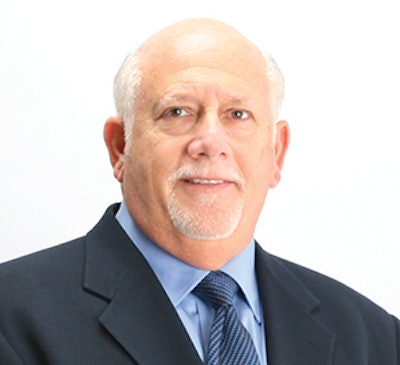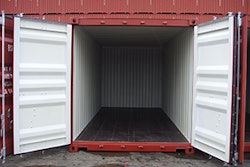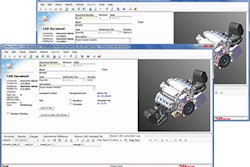
Change can be difficult to initiate and implement, but when done well, it can be transformative. Beyond invigorating an existing business—adding increased economy and efficiency to daily activities—new technology offers the potential to develop new revenue streams and undertake new business opportunities.
Old technology creates many problems. First, it is expensive to operate and maintain. Often, a devoted in-house information technology (IT) staff is required to keep the system running, and develop new programs to overcome technology shortcomings or accommodate new requirements. Such workarounds often result in unintended problems that must be isolated and corrected, which can be a labor-intensive effort. Moreover, today’s generation of programmers may not be familiar with the legacy system or the language used. A staff retirement or position turnover can put an entire business at risk. Thus, the decision to stay with a legacy system carries inherent risks.
It is not an understatement to suggest that global trade management (GTM) is a commercial business function affected profoundly by the events of September 11, 2001. Importing and exporting, in particular, operate with increased government oversight designed to thwart terrorism. It necessitates a whole new level of licensing, classifying and reporting related to product movement. Implementing these regulatory changes often increases staff involvement and reliance on ad-hoc spreadsheet-based solutions. The opportunities for error are great in this environment and can result in everything from delayed shipments to focused assessments by U.S. Customs and Border Protection (CBP).
Seeing the changing landscape, many U.S. companies involved in global trade have acquired new systems with features, functionality and content responsive to this new business environment. In addition to being assured of conducting fully compliant global trade, their technology enables them to participate in the Customs-Trade Partnership Against Terrorism (C-TPAT) program, for example, because new technology enables them to demonstrate having a documented process for identifying and removing risks in their international supply chain. Likewise, new technology can assure compliant foreign trade zone (FTZ) management and operation, as well as compliant trade conducted under international agreements.
Companies should embrace the opportunities new technology offers. It is at once a chance to automate more processes in their current business model, and lay the groundwork for core competency expansion across the near- and long-term horizons.
Barriers That Must Be Overcome
On the plus side, businesses conducting global trade already have the primary prerequisite to success regardless of their technology status: knowledgeable staff. These individuals understand the milieu in which they operate and are successful in conducting compliant trade. While they may not recognize it, they have managed to do so in spite of the odds created by old technology and spreadsheet reliance. Long-time personnel may not consider older technology to be an obstacle. They have used the system for many years and possess a comfort level with it. So, any notion of change may create resistance. User adoption is a real issue that must be overcome.
In-house IT staff members represent a stakeholder group that may be even more difficult to convince of the need for change. Their careers are tied to the legacy technology, so they have a vested interest in perpetuating the status quo. Forward-looking staff, however, may actually embrace the prospect of new technology if they see no career disruptions associated with its acquisition and deployment.
Management buy-in, especially in the C suite, is a key requirement. Without management support, technology change may face a serious barrier. Like any other change, a champion is needed to sustain the process. Otherwise, the effort may die a natural death. Depending on the firm, garnering this support may be difficult or easy.
Then, there is the need for a project leader. An IT manager is a logical choice. Yet, in a business in which a legacy system has predominated for 10 years or more, it is quite possible that such a person is not in a position to offer an expert opinion on the capabilities and functions of current marketplace offerings. The best way to overcome this barrier may be to engage an outside consultant conversant in global trade management solutions and their attributes.
Too often, the process of transitioning from legacy systems to new technology is so daunting that businesses wave a white flag and settle on any GTM system without doing the due diligence required. This mindset is even more dangerous than sticking with the legacy system. Making a capital investment without matching needs against capacity—or user preferences—places system adoption and use in jeopardy.
Understanding Your Technology Needs
Research and analysis of company needs and requirements—current and future—are essential. The best way to truly understand these needs and requirements is to define the business units with a stake in the technology acquisition and assemble a team representing each one.
Some feel an IT department manager should lead. Others suggest that operational units—the eventual users—should be the voice heard above all others. Each has a unique perspective that should be brought to bear in the technology decision, and each should carry equal weight. Of course, if the project leader comes from the IT world, then there may be a bias toward their input. That is one of the advantages of hiring an outside consultant to shepherd the process. He or she has no organizational ties, and knows how to define the needs and requirements, translate them into a well-articulated request for proposal and offer objective technology recommendations. Hopefully, the consultant’s management style adds rigor and clarity to both the search process and the acquisition decision.
Key GTM System Functionality
Most systems come with countless bells and whistles. In reality, most businesses rely on only a handful of these functions. Regardless, the technology selected should be capable of automating your business processes in the way you do business. Your company should not have to adapt to the technology. Such flexibility maximizes automation, productivity and savings—and accelerates the return on investment (ROI) schedule. Configurability also should extend to accommodating revisions to current processes and inaugurating new business lines.
The list of functionality is endless. However, some basic features to look for include:
- Web-native software. A web-native approach speaks to a technology vendor committed to staying current. You don’t want to replace your legacy system with another application that is fast approaching its expiration date. Further, a web-native approach enables content input by your supply chain providers anywhere in the world. In this way, the system data are timely, promoting accurate, faster and more compliant product movement.
- Reporting functionality. Every user possesses different information requirements. Today’s technology should be capable of providing customized reports on demand to enhance decision-making and provide optimal business intelligence. Look for functionality that allows customized reports, is user-friendly and can generate reports automatically as needed.
- Track and trace. Product visibility is essential in today’s business world. Information detailing timing and location give decision makers the option to avoid supply chain bottlenecks, seek less costly options and get to market quicker.
- Compliance and FTZ. Today it’s all about speed to market and saving money to increase revenue. Options like C-TPAT give firms preferential treatment by CBP when it comes to both the number of inspections and their timing. Likewise, FTZs confer economic benefits when it comes to duties and taxes. New technology offers functionality to manage these programs and more, while offering the most up-to-date content available.
A modular approach to GTM functionality offers the advantage of lowering the initial entry price point and allowing business to add as they go. If this path is selected, it is important to identify a vendor that can meet all your current and anticipated future needs with applications that are integrated and part of a centralized database. This approach can minimize future integration costs and assure the modules, whether purchased tomorrow or a year from now, function as a cohesive system.
Your Cloud or Mine
Decision-making does not end once the technology to be purchased is identified. One more choice must be made: deployment mode. Because the options to host internally or externally carry unique cost considerations, the ideal scenario is acquiring technology from a provider that offers multiple deployment options. In this way, price quotes involve apple-to-apple comparisons, making the decision more straightforward.
Businesses that self-host in their own cloud may do so for security reasons. However, they still have the overhead costs associated with in-house IT staff. Firms that select vendor-hosted clouds eliminate staff requirements, however, they incur hosting fees each month. In addition, there can be transaction fees. Transaction costs can accrue quickly, so it is important to understand all the nuances of the arrangement being contemplated.
Supply chain participants look to new technology to increase efficiency and profitability through greater automation and enhanced compliance. The research and analysis process used to define technology needs provides the perfect opportunity to assess business goals and objectives. As part of the evaluation, some key questions to ask are:
- Over the near term, in what ways can we drive more revenue?
- Over the longer term, what opportunities for innovation exist?
- Over the long term, what form should our business model take?
Such an examination not only adds more value to the technology acquisition, but also positions the firm for growth and profitability.
Wayne Slossberg is the senior vice president of QuestaWeb, Inc., a Clark, N.J.–based provider of web-native global trade and logistics management solutions. Over his career, Wayne has sold technology solutions to major manufacturers and retailers in the apparel, footwear, automotive and aerospace industries, among others.











